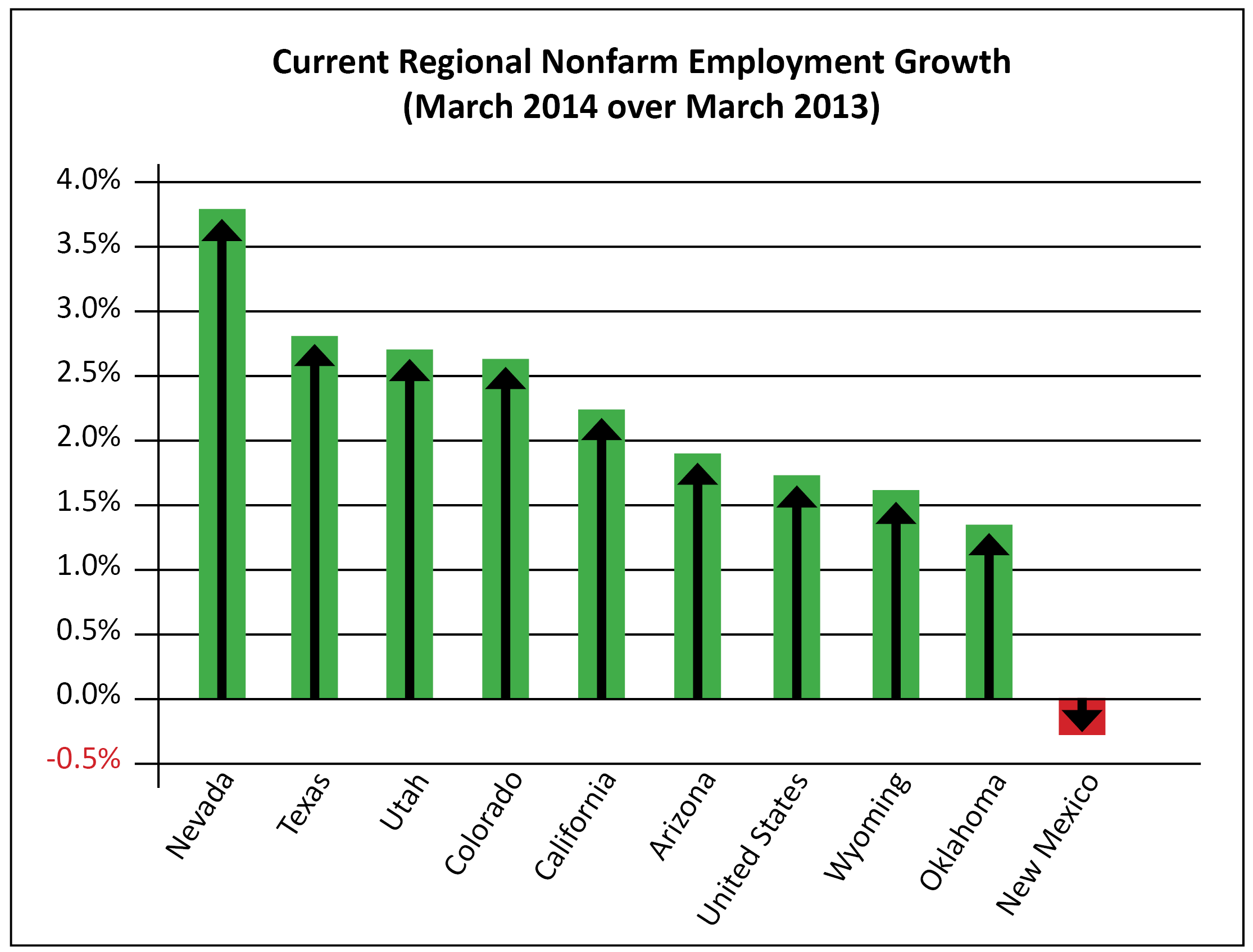by Gerry Bradley
May 13, 2014
Data for the first quarter of 2014 show that New Mexico is facing a severe shortage of the jobs our people need. The state’s unemployment rate is up and job growth is negative.
New Mexico’s labor market is stagnant at best, according to the U.S. Census Bureau’s Current Population Survey, the survey of households used to estimate the unemployment rate. Since the unemployment rate measures people looking for work, the rise in the rate may have been caused by an influx of people entering the labor force to look for work. New Mexico’s unemployment rate rose to 7 percent in March from 6.7 percent in February. That put our unemployment rate above the national rate of 6.7 percent. (The national unemployment rate in April was 6.3 percent but, because the April rate for New Mexico is not yet available, March rates are used for comparison.) Before March, New Mexico’s rate had been lower than the national rate during most of the past five years.
The U.S. Bureau of Labor Statistics (BLS) uses the Current Employment Survey to estimate jobs and job growth. According to the BLS employer survey, New Mexico lost jobs in the first quarter of 2014.
The total number of jobs in New Mexico fell from 811,700 in March 2013 to 809,800 in March 2014. This was a drop of 1,900 jobs over the year. The number of jobs was 811,100 in February 2014, so the number of jobs fell over the month as well. As the following chart shows, New Mexico is way behind other states in the region for employment growth.
New Mexico continues to experience job losses in the goods-producing sector, which includes construction and manufacturing. Both construction and manufacturing jobs were down over the month and over the year. Construction and manufacturing are considered part of the foundation of the New Mexico economy. Construction and manufacturing jobs are often seen as bridge jobs—meaning they enable blue-collar workers to improve their skills and move up to more skilled and higher-paying occupations. That bridge doesn’t exist if construction and manufacturing employment is not growing.
Business services jobs include mainly well-paying jobs requiring a high level of education. Business services were down 1,200 jobs over the year and 200 since February. Business services includes employment at the two national laboratories, Los Alamos and Sandia. The national laboratories are counted in the private sector because they are managed by private-sector firms for the Department of Energy.
The current austerity policies of the federal government are especially damaging to New Mexico because of the important federal presence of the national laboratories and the Air Force Bases in Albuquerque, Alamogordo, and Clovis.
There are a few bright spots. Leisure, hospitality, and trade sector jobs were up over the month as the national recovery, which is outstripping New Mexico’s recovery, has led to more tourists coming to New Mexico. These tend to be relatively low-wage jobs, however.
Health services jobs were steady over the year, but grew by 800 over the month from February to March. Health employment is expected to burgeon as the health services sector staffs up to meet the demands of the newly insured under the Affordable Care Act.
The Las Cruces metropolitan area is an outlier on the array of employment growth. Las Cruces is posting growth because of the expansion of the Santa Teresa port of entry, an intermodal transportation hub on the U.S.-Mexico border. The Albuquerque, Santa Fe, and Farmington metro areas are losing jobs.
Gerry Bradley is Senior Researcher and Policy Analyst for NM Voices for Children. Reach him at gbradley@www.nmvoices.org.

